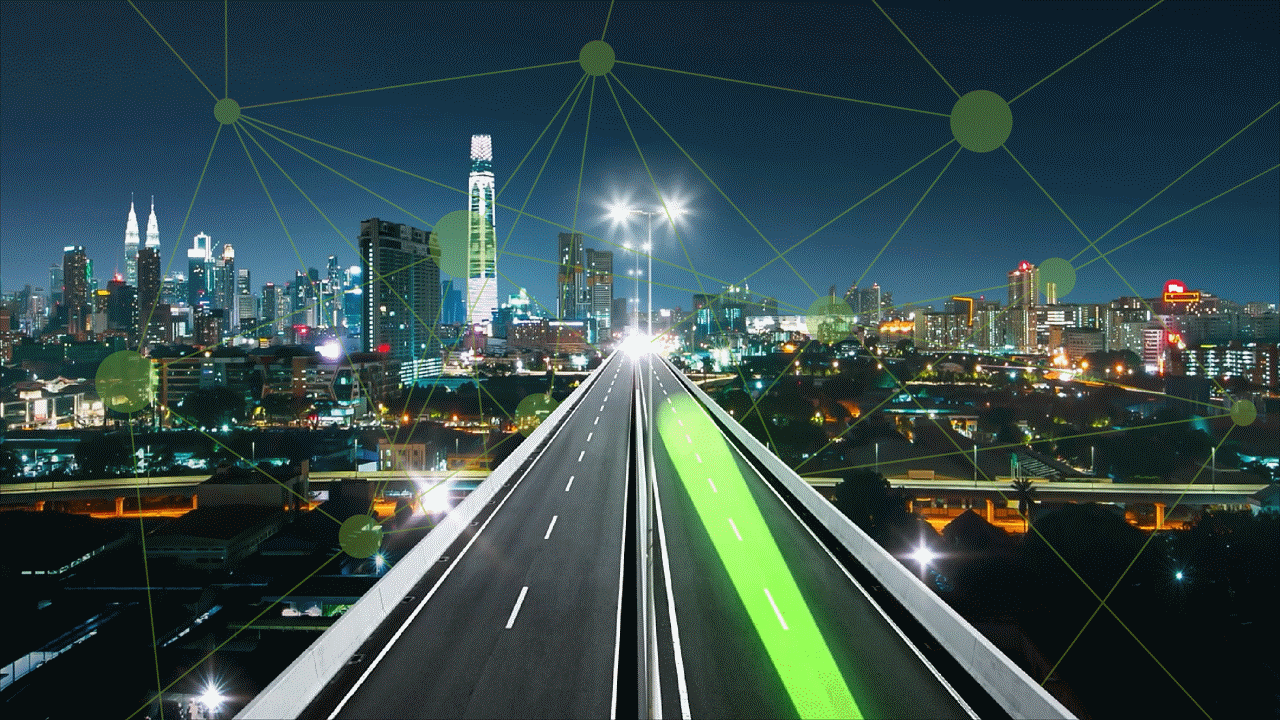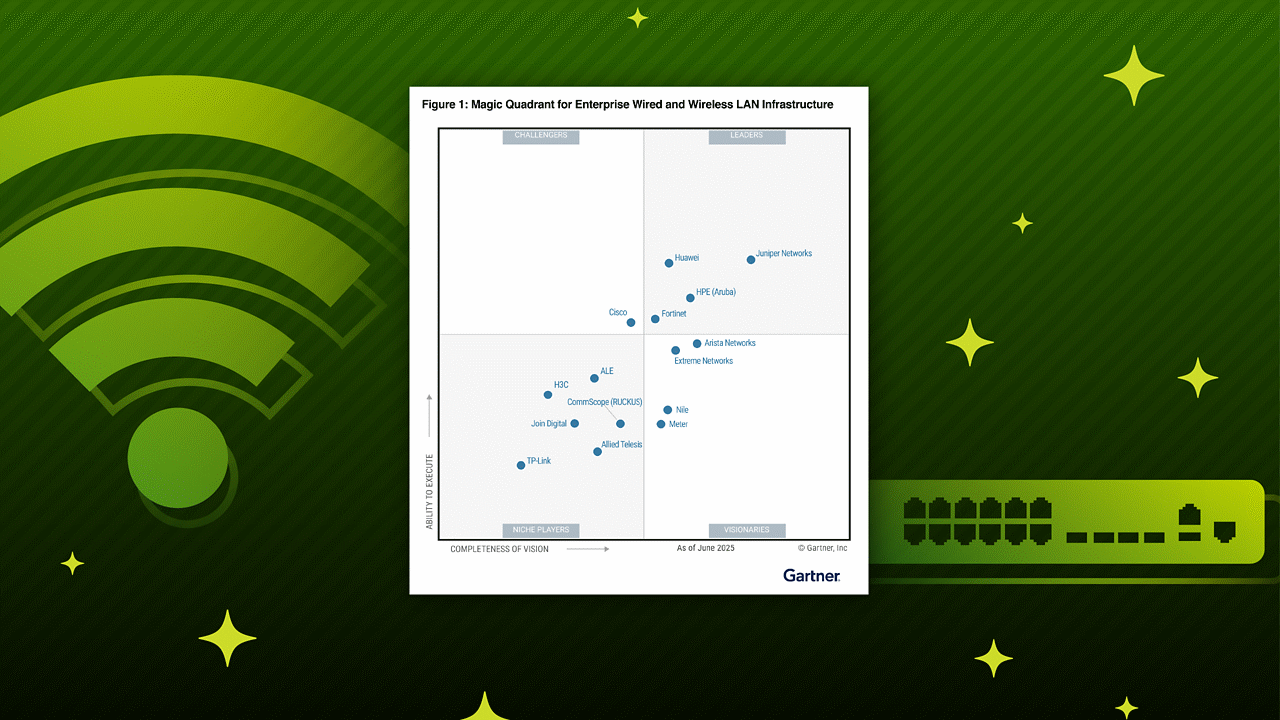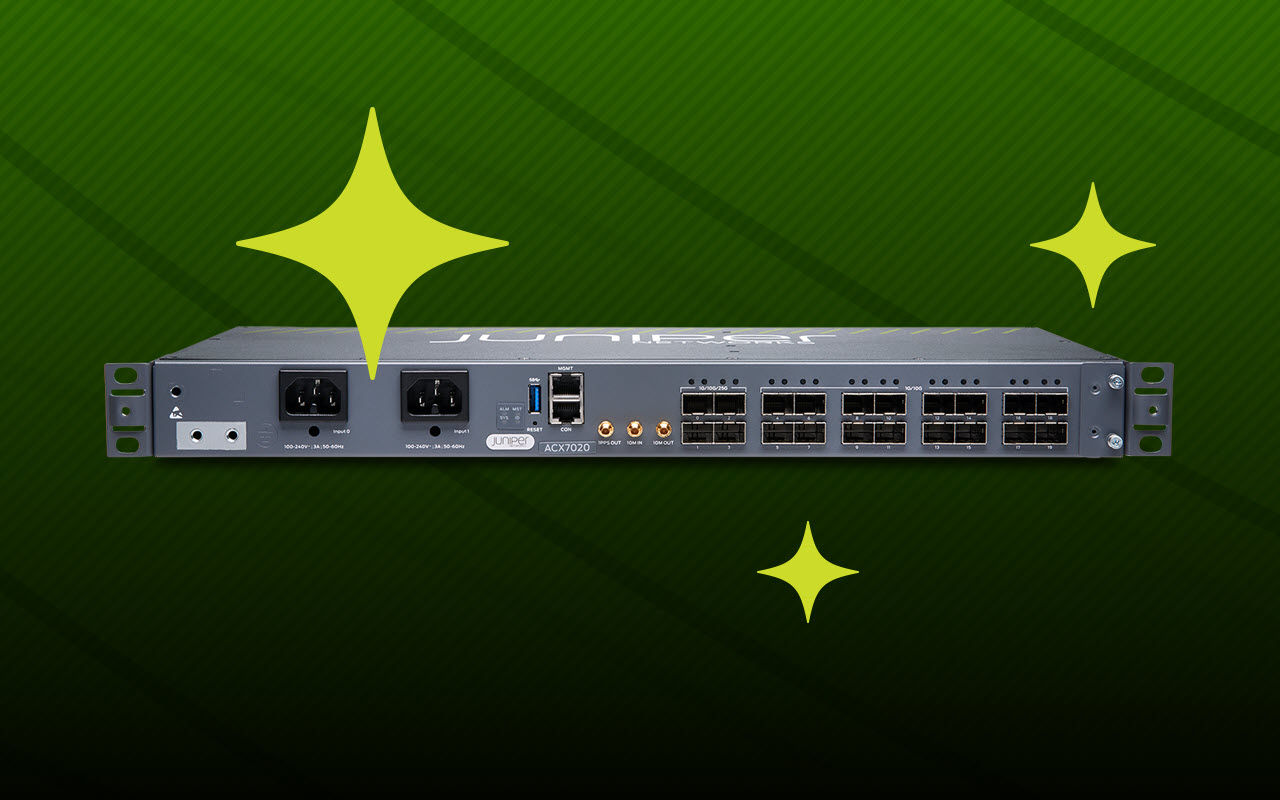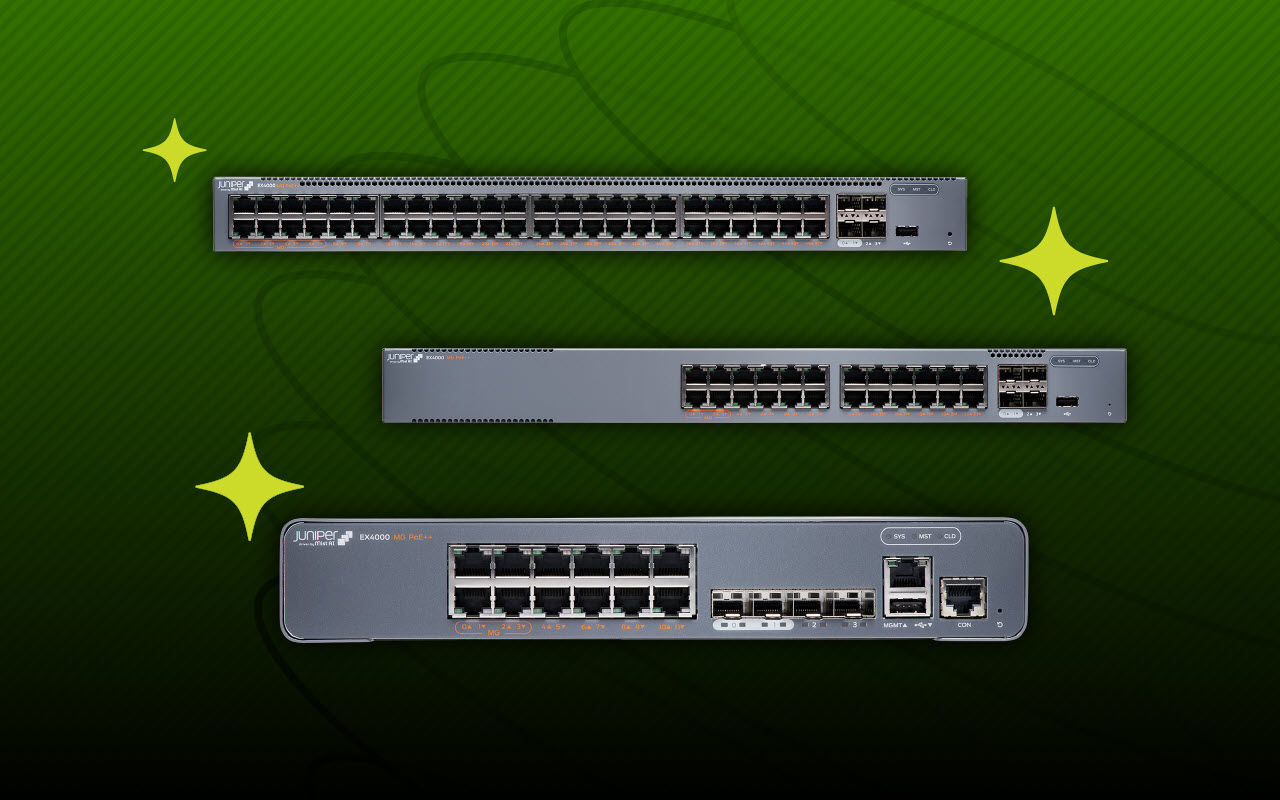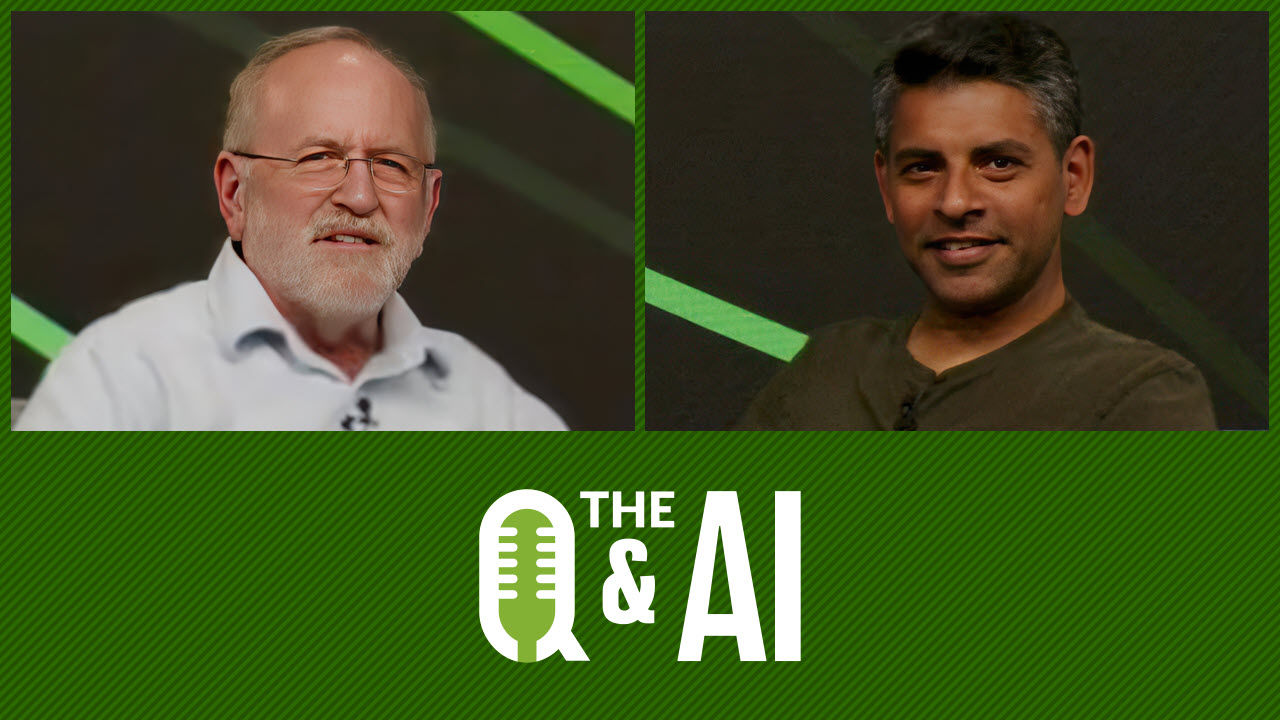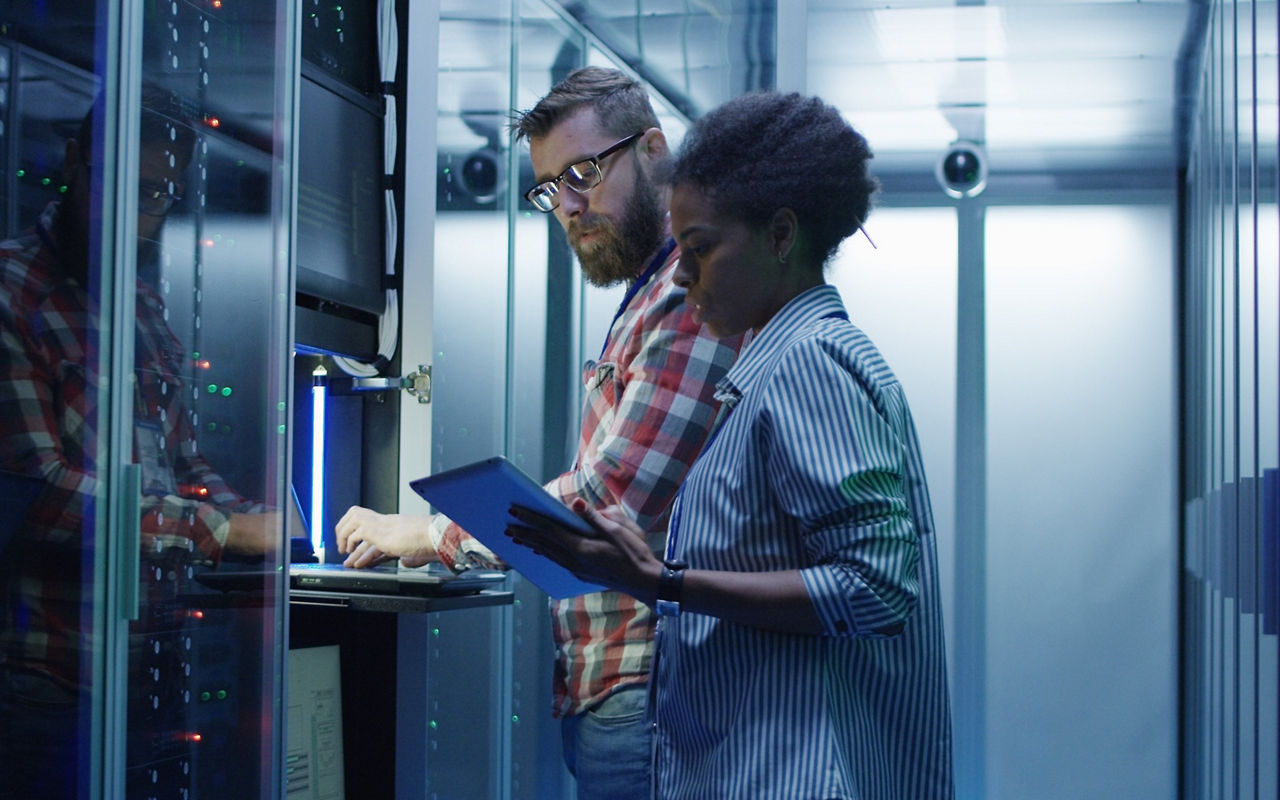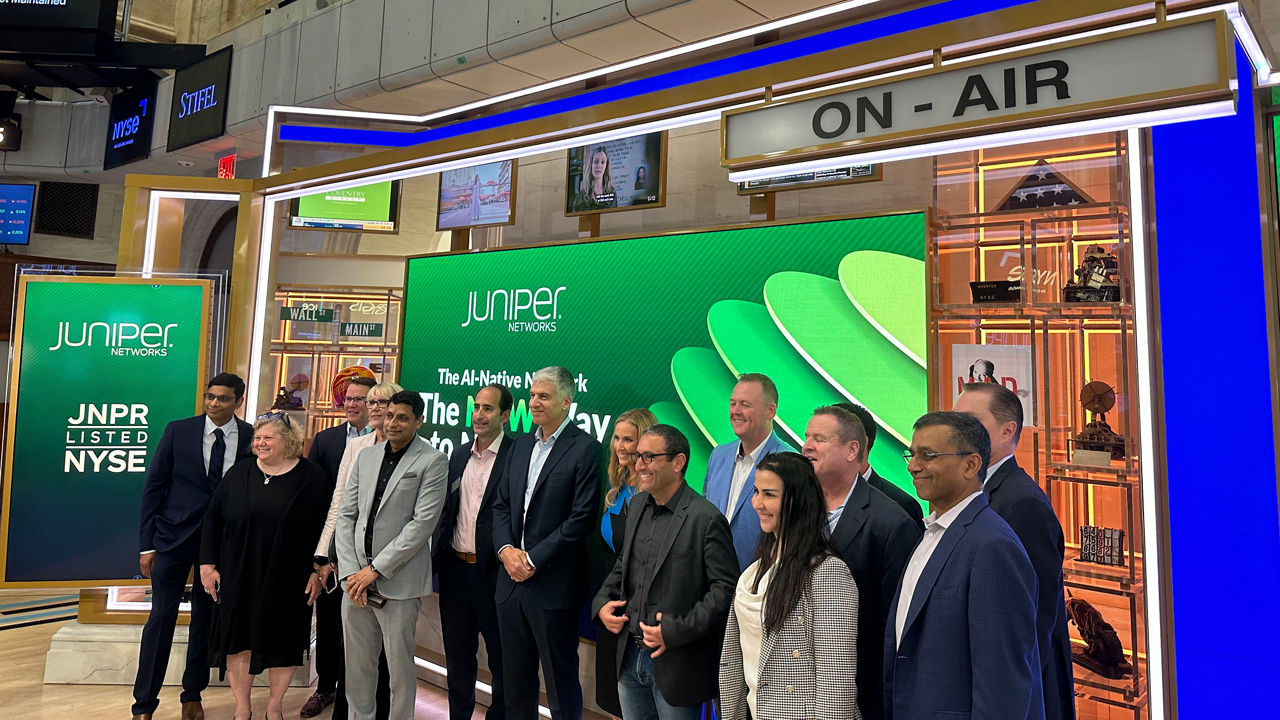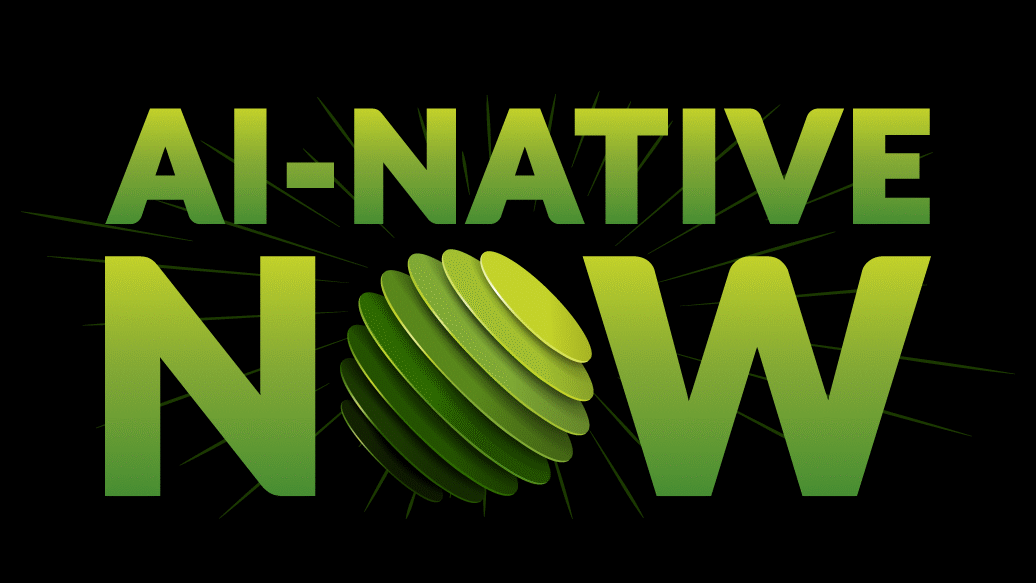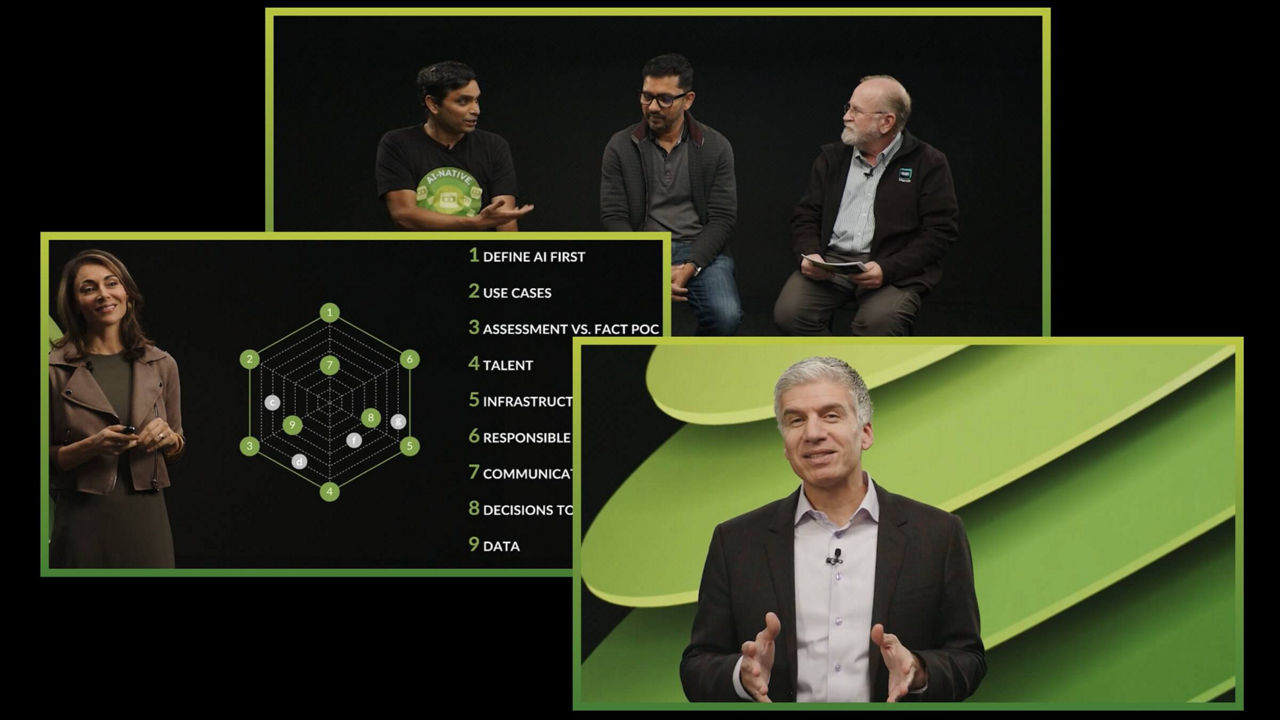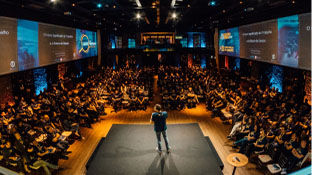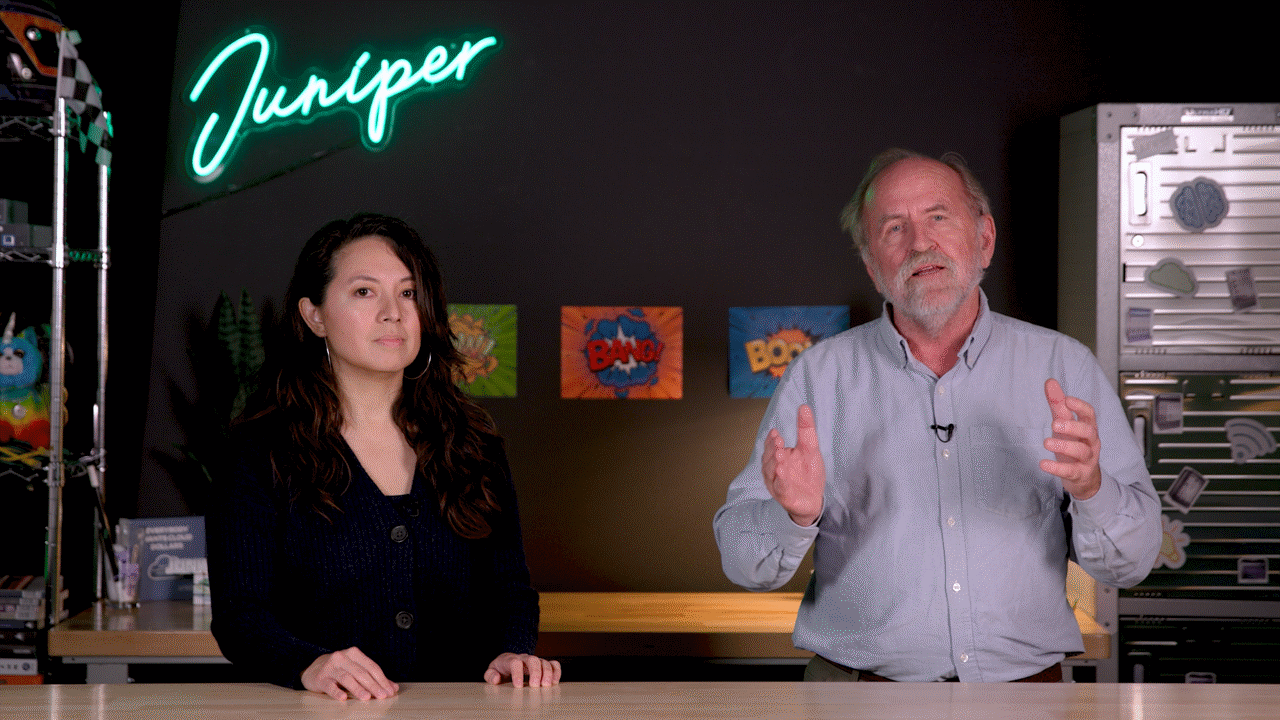ZKast with Bob Laliberte


From Wi-Fi 6E to Juniper Apstra: The latest network industry news you need to know
If you missed Extreme Networks Connect 2021, then you’ll want to tune into this episode of ZKast with Zeus Kerravala and guest host Bob Laliberte for the key takeaways and the latest tech news, including the launch of Juniper’s Apstra 4.0.
You’ll learn
How Major League Baseball is leading the sports industry in cloud-based technology, plus how other industries can follow its lead
How the new 6 GHz band for Wi-Fi applications and devices is delivering ultimate network performance
Why Kerravala says Juniper’s Apstra 4.0 is an excellent product if you are looking to utilize intent-based networking
Who is this for?
Host

Guest speakers

Transcript
0:00 [Music]
0:05 uh welcome to c-cast everybody i'm zia
0:07 caraval from zk research and uh
0:09 i have a special co-host with me today
0:11 it's uh none other than
0:13 bob laliberte from esg now a tech target
0:16 company
0:17 uh bob why don't you tell everybody a
0:18 little bit about yourself
0:20 isaiah thanks for having me on yeah so
0:22 i'm senior analyst at the enterprise
0:24 strategy group and i've been focused on
0:26 covering the network space for a number
0:28 of years now
0:29 yeah you're uh one of the better network
0:30 analysts i like that you know i think
0:32 you're maybe the number two you know so
0:36 we won't say who number one is but bill
0:37 just left let people just uh you know
0:39 think that now
0:40 um uh i wanted to have you on because
0:43 this was a
0:44 big week in networking memorial day is
0:46 coming up and it seemed like all the
0:47 vendors rushed to get
0:48 you know product announcements out um
0:51 and uh it's good to see all the network
0:52 activity because
0:54 you know it's been my thesis for a long
0:55 time that the network is growing in
0:57 importance and
0:58 you know it's it's funny that uh i've
1:00 been an analyst 20 years and
1:02 ever since i've been an analyst i've
1:03 been caring about the commoditization of
1:05 the network
1:06 but if you look at all the innovation
1:07 that's been driven into it we're
1:08 certainly
1:09 you know i don't know how you look at
1:10 the market but we're far from being
1:11 commoditized
1:12 yeah absolutely i mean the fact that the
1:14 it pendulum is swinging back towards
1:16 distributed
1:18 only increases the importance of the
1:20 network and the connectivity between
1:22 you know users and apps apps and apps
1:24 users and users so
1:25 and as we've seen over the last year the
1:27 network has become a really critical
1:29 component
1:30 for organizations to ensure their
1:31 business operations on a daily basis
1:34 yeah certainly and that was certainly
1:36 well said and uh
1:37 you know one of the we had an event this
1:39 this week uh
1:40 a virtual event the extreme networks had
1:43 its
1:43 uh connected events with the connect
1:46 event with the tagline of advance
1:48 uh i thought it was a pretty good event
1:50 they condensed the keynotes and
1:51 stuff down to one hour you know thank
1:53 heavens because i think everyone's
1:55 getting a little tired of these long
1:56 events
1:56 um one of them and to support what you
1:59 were saying though with the importance
2:00 of the network they had brian shield on
2:01 who was the cio of the red sox
2:04 and he talked a lot about um the
2:06 digitization of baseball and how
2:09 because of the pandemic they had to
2:10 pivot the digital ticketing contact was
2:12 purchasing
2:13 uh you know things like that and so the
2:15 network all of a sudden became
2:17 really important and uh when you think
2:20 about what major league baseball's
2:21 trying to do
2:22 uh he even mentioned vr and ar and
2:24 things no network
2:26 means no fan experience right so i don't
2:28 know what what do you think away from
2:29 that
2:30 yeah i thought it was really interesting
2:31 and i thought it was great that they
2:32 were hosting it
2:33 at one of the oldest ballparks in the
2:35 country but yet
2:37 highlighting some of the most modern
2:38 technology right i think the first
2:40 sporting venue to implement a lot of
2:42 these contactless
2:44 technologies leveraging wi-fi was the
2:46 super bowl this year
2:48 and so it was really cool to see you
2:50 know fenway someplace near and dear to
2:52 me right very close to me to be able to
2:54 go there and have a contactless
2:55 experience and so having everything
2:57 digitized and the interesting part is
2:59 that i think it was really interesting
3:00 to hear him talk about it's
3:02 it's not just the things you'd normally
3:03 think about just like the ticketing but
3:05 also
3:05 enabling all of the concession stands to
3:08 be able to go
3:09 with that contactless you know
3:11 technology so you know they clearly took
3:13 advantage of the downtime they had in
3:15 the offseason
3:16 to revamp the infrastructure there and
3:18 to be able to roll that out to
3:19 accommodate
3:20 i think what will be going forward
3:22 clearly as things open up it's going to
3:23 be great more people will be going back
3:25 but it just provides a better fan
3:27 experience by being there and being
3:29 not having to deal with money deal with
3:31 anything deal with tickets all that kind
3:33 of stuff so
3:34 i think that's going to be a great
3:35 advance for all of the sports venues who
3:36 adopt this technology
3:38 and i think it's going to be interesting
3:40 to see how else
3:41 they can leverage that technology to
3:44 enhance the fan experience like you said
3:46 potentially ar vr type technologies
3:48 things like that that would be fantastic
3:50 yeah and uh as part of the event
3:52 actually nabil bukari their cto
3:55 came up with a new a kind of a vision
3:57 for the company which is important
3:59 because i think the extremes did a nice
4:00 job of rolling products together
4:02 but this is the first time i've really
4:03 heard them kind of throw a stake in the
4:04 ground right as far as
4:06 kind of where the industry is going he
4:07 talked about something they called
4:09 the infinite enterprise right he had
4:11 three tenets to that
4:13 um infinitely distributed connectivity
4:15 scalable cloud
4:16 and consumers eccentric experience and i
4:19 thought
4:20 given the state of work today the
4:22 infinite enterprise
4:23 does make some sense because frankly the
4:25 enterprise can extend
4:27 to anywhere today right and i i think
4:29 that's uh
4:30 i don't know do you have any thoughts on
4:31 what what they're calling the internet
4:33 uh yeah absolutely i mean i think at esg
4:37 we refer to
4:37 what we're seeing today is more of a we
4:39 refer to as the distributed cloud
4:41 so i know a lot of people like to talk
4:42 hybrid and multi but
4:44 we've seen you know applications are
4:46 being distributed across
4:47 private data centers multiple public
4:49 clouds and edge locations
4:51 and the employees are distributed across
4:53 you know literally wherever i know
4:55 just in in my town i've talked to two of
4:57 my friends who their kids
4:59 have built out a panel van and they're
5:02 driving around the country they're still
5:03 working but they're working from
5:04 wherever they happen to be that day
5:06 so that concept of infinitely
5:08 distributed connectivity really rings
5:10 home where
5:10 it's not just about connecting to the
5:12 home it's connecting to wherever they
5:14 may be
5:14 so i think that really resonates for
5:17 organizations that are dealing with this
5:18 really highly distributed environment
5:21 certainly from a cloud perspective
5:22 all of our research highlights that
5:24 aspect that during the pandemic
5:26 organization's accelerated
5:28 adoption of public cloud services and
5:30 use of in distributing their workloads
5:32 to the public cloud
5:33 and then obviously that consumer centric
5:36 experience that he discussed
5:38 is something that's really important the
5:40 interesting thing is that
5:42 when you're thinking about experience it
5:43 extends it used to everyone's talk about
5:45 customer experience
5:46 but you're hearing a lot more in the
5:47 last year about user and employee
5:50 experience and what they're having right
5:52 because they
5:53 not only from running the it environment
5:56 but also just what their employees are
5:58 experiencing whether they're at home
5:59 whether they return to the office or
6:01 whether they're in a van driving
6:02 somewhere around the country
6:04 that they have that consistent user and
6:06 a consistently good user experience
6:08 yeah and if you elon musk that
6:09 experience that extends out of space now
6:11 i guess
6:11 um correct yeah so one of the the new
6:14 products they announced actually uh and
6:16 every
6:16 you know user conference must have
6:18 product announcements right
6:20 was the was their co-pilot offering
6:22 which is part of their extreme cloud iq
6:24 um and it's an ai offspace platform
6:28 that's designed uh and i like the term
6:30 co-pilot because it's not designed to
6:32 replace the network engineer but in fact
6:34 to
6:35 work with the engineer to help them
6:37 troubleshoot things faster
6:39 and i don't know any network engineers
6:40 that like to troubleshoot so
6:42 i thought co-pilot was a pretty good
6:43 product uh nabeel actually said that
6:47 it had an sla i don't know if it wasn't
6:48 actually hard sla but he said it was
6:50 99 accurate which actually given the
6:53 state of
6:54 the early adoption of aiops and
6:56 networking today that seemed to be a
6:58 pretty big number to me
7:00 yeah i mean that's it well it's
7:01 interesting because they they also the
7:03 thing that i found really fascinating
7:04 about
7:05 the intelligence that they were building
7:06 into it is they actually
7:08 integrated the the worker the human
7:11 quite well with it so when you think
7:13 about a lot of times when we think about
7:15 aiml it follows that traditional
7:17 alert recommend and automate phase right
7:20 so first alert tell me something's wrong
7:21 and i'll go figure it out
7:22 then recommend to me what's wrong and
7:24 you know and eventually let me hit the
7:26 easy button and go forward
7:28 i thought some of the cool parts i saw
7:29 about co-pilot revolved around the area
7:32 that
7:32 they i think they refer to it as
7:34 explainable ai right so
7:36 they're trying to take the mystery it's
7:38 not a black box that just
7:39 runs off and does something and oh by
7:40 the way you might lose your job if it
7:42 does the wrong thing
7:43 but it tells you hey this is what we
7:45 think we should do and this is why
7:47 and oh by the way if you want you can
7:49 click here and connect into our
7:51 into our service center and talk to a
7:52 human and so forth so bringing that
7:54 human involvement into ai i think is
7:56 critical
7:56 for its adoption because ultimately all
7:59 of these
8:00 these administrators and the people
8:01 using it the engineers need to be
8:03 comfortable with it so i think what
8:04 they've tried to do is somewhat humanize
8:06 ai
8:07 and even to the point where hey you're
8:10 not sure what this is click here for a
8:11 video
8:12 right they're trying to really make it
8:14 as smooth and a seamless transition to
8:16 adopting that technology
8:18 that ultimately will save them a lot of
8:20 time and make them more operationally
8:21 efficient
8:22 but doing it in a very human way so i
8:25 thought that was a really nice touch
8:27 yeah and uh i i thought the other really
8:30 notable part of the keynote structure
8:32 too was the interview at the end
8:33 that norman reister ceo had with
8:35 charlotte college from broadcom
8:37 frankly charlie is a pretty big hitter
8:39 in this industry i was a little
8:40 surprised to see him on there but that
8:42 was you know great for extreme
8:44 and they did talk about how extreme was
8:46 part of the early access program
8:48 or broadcom and for extreme customers
8:50 that news itself is pretty significant
8:52 because now extreme gets access to all
8:54 the silicon for broadcom earlier than
8:56 a lot of its competitors they get access
8:59 to uh to a lot of these the software
9:01 they influence the road map and for you
9:04 know extreme they've
9:05 you know they've uh they've made their
9:07 bet you know with broadcom
9:10 and i think if you're an extreme
9:11 customer that was certainly good news
9:13 and that aren't going to be any
9:14 takeaways from the charlie interview
9:16 yeah no i think you covered most of it i
9:17 mean it was great to see that they've
9:19 got that type of a strategic
9:20 relationship that gives them that early
9:22 access so they're able to bring new
9:24 technologies we know things are changing
9:26 so fast these days
9:27 that having that inside track to the
9:29 latest technologies is just going to
9:30 enable them to
9:31 to roll out that functionality that much
9:34 faster to their to their customers as
9:35 well
9:36 yeah all right well uh lots going on
9:39 extreme that's good to see
9:40 uh this company has sort of you know
9:42 gone through some ups and downs and
9:43 integrated all those companies but they
9:44 seem to really have the engine revving
9:46 now so
9:47 uh expect to see more from them also
9:49 this week bob i start early in the week
9:51 aruba
9:52 network's an hpe company they always
9:53 make me throw that in
9:55 announces 630 630 series of access
9:58 points
9:59 and as far as i know these are the
10:01 they're the first vendor to offer
10:04 a wi-fi 6e
10:07 access point that's a business grade i
10:09 mean right
10:11 next to gaming and if you're not
10:13 familiar with wi-fi 6e
10:14 this is wi-fi that uses the six
10:16 gigahertz spectrum
10:18 instead of the traditional 2.45 and
10:21 what that lets you do a whole bunch of
10:23 things you have better bandwidth you get
10:24 better throughput because it's not
10:26 congested
10:27 um you should get better performance
10:30 it actually makes the 160 80 and 40
10:32 megahertz channels usable
10:34 which then aren't really a 2.4 5. i
10:37 think some of the key applications that
10:38 you'll see
10:39 will be i have more iot devices i think
10:41 it's great for video early on eventually
10:43 everything will be 60 probably uh but
10:45 given that we're going to see a rise in
10:47 the workplace
10:48 um in the number of iot devices for
10:50 people you know coming back to work even
10:52 like cleaning robots things like that um
10:55 i
10:55 you know i think um it's uh it was a
10:58 pretty good announcement from my the
10:59 aruba aps are tri-band so
11:02 customers can deploy it and still run
11:03 their 2.45 and when the
11:05 when the six gigahertz uh the 60 devices
11:08 come up they can connect those as well
11:09 so
11:10 i don't know i know you cover wi-fi
11:12 pretty closely what do you what do you
11:13 think of the ap
11:14 and then just the overall uptake what
11:16 would she expect for uh succeed
11:18 yeah i think this is obviously it's a
11:20 great to see these types of advances
11:21 right so the fcc just opened up the
11:23 spectrum i think it was last year about
11:25 a year ago
11:25 now and so to see that rapid turn around
11:28 and be able to bring this technology to
11:30 market
11:30 is certainly going to help i mean having
11:33 that those three bands having like you
11:35 said
11:35 that capability to be able to for highly
11:38 congested areas and things like that to
11:39 be able to bring that additional
11:41 capability to bear
11:42 is certainly going to help as
11:44 organizations come back
11:46 hpe aruba has always had a focus on iot
11:48 and having those you know so from the ap
11:50 perspective supporting additional iot
11:52 protocols is certainly going to help as
11:55 well
11:56 and like i said i think it opens up for
11:58 some new opportunities and new
11:59 possibilities for organizations that
12:01 maybe couldn't use wi-fi previously for
12:05 things like ar and vr
12:06 and you know we all we we know that it's
12:08 going to be the new workplace the hybrid
12:10 workplace is going to be video intensive
12:12 so we also know it's going to be very
12:14 much you know when we talk about hybrid
12:16 people aren't talking about assigned
12:18 desks they talk about hot swapping the
12:19 desks and so forth
12:21 so i think you're going to see a lot of
12:22 organizations you know moving to the 6e
12:25 technology as it rolls out it's
12:27 certainly going to be
12:28 at the very least it's going to be great
12:30 for future proofing
12:32 organizations right if you're thinking
12:33 about doing a deployment now now that
12:35 there's some enterprise grade solutions
12:37 available it gives you a lot of options
12:39 for how you build out
12:40 your environment yeah and um you know we
12:43 talked about ai ops in the last section
12:45 with extreme
12:45 there is some ai built in this as well i
12:47 know one of the unique features it has
12:49 is something they call
12:50 it i think it was altered fry band
12:52 filtering to minimize the
12:54 interference between the five and six
12:55 gigahertz band uh basically what it does
12:57 is it um
12:58 it dynamically it's looking at traffic
13:01 and it dynamically applies filters
13:03 uh allowing that traffic to stay
13:06 separate so
13:07 it optimizes performance even though
13:08 you've got all the radios in one device
13:10 you actually get a very clean spectrum
13:12 whether it's five or six
13:13 tigers yeah and ultimately that comes
13:16 down to is
13:17 it is providing a better experience for
13:18 the users right so that you keep coming
13:20 back to these same themes around
13:22 it's operationally efficient so people
13:23 don't have to spend time troubleshooting
13:25 those activities and ultimately the
13:27 people who are using it the employees
13:29 the customers potentially
13:30 are getting a much better experience
13:31 when they're when they're using it so
13:34 yeah i don't know of any commercially
13:35 available 6e devices i think
13:37 one of the uh the the asian
13:41 phone manufacturers has one now but
13:43 certainly over the next uh
13:44 couple of years we'll start to see more
13:46 of them so yeah and like you said i mean
13:48 this is something that's going to be
13:49 rolling out over time and as always
13:51 anytime there's a new technology there's
13:52 a lag between the devices having
13:55 the ability to access that technology
13:57 but like you said if you're if you're
13:58 thinking about rolling something out now
14:00 that ability to future proof just makes
14:02 all the sense in the world yeah and if
14:03 you don't do that what i always find is
14:05 customers wind up having to do the
14:06 deployment twice right they do it today
14:08 and then you know oh my god we have all
14:10 these devices we got to do it now so
14:13 okay and uh the other uh the last bit of
14:16 notable network news i thought was
14:17 juniper's announcement of abstract 4.0
14:20 so after it was an acquisition they made
14:22 uh
14:23 earlier this year late last year
14:25 something like that uh
14:26 and they were uh the the indus one of
14:29 the first intent based networking
14:30 vendors
14:31 uh they are um vendor agnostic which is
14:34 what i liked about astra
14:36 and this was their 4.0 launch and so uh
14:39 the 4.0
14:40 launch it introduced uh things like
14:43 sonic support uh better support for
14:45 vmware's nsx
14:47 t 3.0 uh they had a bunch of templates
14:49 as well
14:50 right so uh customers could deploy
14:52 things much faster
14:53 i i like ask abstra i think thought
14:56 there was a little bit of heavy lifting
14:57 done to get it up and running
14:58 so the templates should uh you know
15:01 certainly help with that
15:02 um and uh i think uh from a juniper
15:05 perspective they have kept the product
15:07 vendor agnostic which i think is good
15:10 every time you close things down you
15:11 limit the appeal of it so
15:13 obviously down the road i think there
15:14 will be some juniper juniper benefits
15:16 but
15:16 uh they they did maintain the vendor
15:18 agnes part of appstore and i think if
15:20 you're a customer
15:21 running a network and you're looking to
15:22 do you know some intent-based network in
15:24 your data center
15:25 astra is an excellent product so that's
15:27 you know
15:28 your thoughts on this yeah no i think a
15:30 lot of those a lot of the capabilities
15:31 that you highlighted are going to
15:33 certainly help a lot i mean from from
15:35 our research we know that
15:36 i think it's like over 75 of
15:38 organizations
15:40 still have less than 40 percent of their
15:42 workloads in the cloud
15:43 so the data center environment is still
15:45 extremely real it's still large it's
15:47 still very complex
15:48 and again having something like appstore
15:51 coming into that environment and
15:52 especially now with their ability to see
15:54 into
15:55 vmware's nsxt having that visibility
15:58 into the underlay and overlay
16:00 is going to drive a lot more efficiency
16:02 i think like you mentioned
16:03 they provided support for sonic so for
16:05 those hyperscale environments those
16:06 people that want to build that out
16:08 they now have the capability to work
16:10 with that so
16:11 i think a lot of what they're doing and
16:14 that intent based networking
16:16 and the closed loop automation and
16:18 things like that that they have as part
16:19 of that are all going to help drive
16:21 a lot of the operational efficiency in
16:23 the data center and a lot of those
16:25 things like you mentioned the templates
16:26 are certainly going to help with that
16:28 especially in large scale environments
16:29 where they need to roll out across
16:31 entire fabric and i think the other you
16:33 know like you said they are keeping it
16:35 agnostic so they're
16:36 they're covering cisco they cover arista
16:38 cumulus and i think
16:40 they added some of the the juniper
16:41 switches with this as well right the qfx
16:43 and
16:44 maybe the srx or something like that
16:46 yeah and i i will say that this is
16:49 the continued evolution of juniper
16:52 as a much stronger enterprise company
16:54 you know prior to
16:55 rami rahim come in as their ceo i
16:58 already questioned whether juniper even
16:59 wanted to be in the enterprise space at
17:01 all it's like
17:02 they they had a bunch of i guess
17:04 interesting products but they never
17:05 really had an enterprise strategy
17:07 now with uh you know with the ac this
17:09 all started with the acquisition of mist
17:11 you know and then 128t and now appstra
17:14 they seem to really have the
17:15 enterprise engine going and uh you know
17:18 they they've recently promoted some
17:19 missed announcements now abstract
17:21 and uh this seems to be a company that's
17:23 actually got a very
17:24 you know sound uh go forward strategy in
17:26 place
17:27 yeah they've made some real strategic
17:30 acquisitions
17:31 i think is the best way to describe it
17:33 to bolster their enterprise space and
17:35 you know we we talk amongst ourselves
17:37 about the mystification
17:38 of juniper right as they roll that out
17:40 across their entire product line and
17:42 apps are bolstering the data center
17:44 space right and
17:46 128 technology is helping out on the lan
17:48 side they've got security so
17:50 they're playing into the you know
17:51 they've got options for sassy
17:53 they've got an end-to-end capability
17:55 they're going to be cloud-based in their
17:56 management so
17:58 i think a lot of what they're doing is
18:00 really positioning themselves to have
18:02 significant growth in the enterprise and
18:04 i think that's it's not only positioning
18:05 them but if you look at their numbers
18:07 it's it's bearing fruit that over the
18:09 last year they've been making
18:10 significant strides in the enterprise
18:12 yeah and the point you made about the
18:13 acquisitions uh being good acquisitions
18:15 actually is a notable one because i
18:17 think they went from
18:18 a long period of time where they had
18:20 just wasted acquisition after wasted
18:22 acquisition so
18:23 uh they seem to figure that out now so
18:25 you know good for them
18:26 i think strength in the enterprise
18:27 networking space as we talked about the
18:29 beginning is important because of
18:30 all the advancements and all the the
18:33 different ways the enterprise the
18:34 network is touching us today
18:36 yeah absolutely and so lastly i just
18:38 want to touch on this we don't spend a
18:40 lot of time on it because i think we've
18:41 been
18:41 going a little while here z scanner
18:43 announced their earnings this week and
18:45 i um you know while this is a security
18:47 topic they are becoming more of a
18:49 network company right and so if you're
18:50 not familiar with z-scaler
18:52 if you're watching this they're a
18:53 cloud-based security company that's
18:55 really
18:56 pivoted to sassy and what's interesting
18:58 about sassy is it's finally brought
19:00 we've been talking about bringing
19:01 security and networking together for a
19:02 long time
19:03 nobody just nobody did it right and so
19:05 now with sd-wan it's sassy that's
19:07 happening but their billings grew
19:09 seventy-one percent year-over-year the
19:11 street was expecting 42 percent so
19:14 you know they kind of knocked the cover
19:16 off of that the revenue improved 60
19:18 year-over-year the street was expecting
19:19 48 um they had a lot of large deals
19:23 and the large deals is important too
19:24 because a lot of the early adoption of
19:26 z-scaler was
19:27 down market right and so in addition to
19:31 they're added to their portfolio as well
19:33 as
19:35 in addition to their internet access
19:37 product with zpa private access they
19:38 announced
19:39 that they've come out with a client
19:41 cloud connector cloud protection service
19:43 and stuff so
19:44 uh this is a company that when i look at
19:47 it
19:48 you know they have a market cap of 26
19:49 billion dollars on a revenue of only 656
19:52 million
19:53 you can look at that stock as overpriced
19:54 but clearly
19:56 the trend in networking and security is
19:58 to the cloud
20:00 right and um and they are maybe
20:03 on the security side anyways the poster
20:05 child for that and this concept of
20:07 hybrid workplace
20:08 um you really can't use old-school
20:11 security
20:12 you know big heavy appliances in a bunch
20:14 of places and so this is
20:15 this i think z scanner sort of
20:17 epitomizes the shift that's going on in
20:19 the industry now
20:21 where you know we need more agility we
20:23 which drives us to more cloud because we
20:25 need to deploy services everywhere and
20:26 so
20:27 if you think of the concept that we
20:28 started with with the infinite
20:29 enterprise
20:30 the z-scaler model you know certainly
20:32 helps secure that as well so i don't
20:34 know if you have any
20:35 uh thoughts on what we're seeing here so
20:37 yeah no absolutely like we talked about
20:39 the more distributed things become
20:42 the more you need to have solutions that
20:44 will help you secure that environment
20:45 and connect the environment we've been
20:46 talking a lot about on the networking
20:48 side but
20:49 everything that's connected has to be
20:50 secured and so
20:52 i think it was interesting to see when
20:54 the pandemic first hit a lot of
20:56 organizations
20:57 went to their their old technologies
21:00 right hey
21:00 we gotta spin up the vpn concentrators
21:02 get some more firewalls spun up in the
21:04 data center
21:04 and they basically recreated to ensure
21:06 security they recreated
21:08 a model they were trying to get rid of
21:10 with sd-wan and that all the remote
21:12 users were now funneling through the
21:13 data center to get to any cloud apps and
21:15 things of that
21:16 nature so you know the timing has been
21:18 really good for zscaler
21:20 in that with everyone re remote and
21:22 working from home
21:23 and needing to be secure securely
21:25 accessing applications
21:27 it provides a great opportunity for them
21:29 to be that point
21:30 in between i know a lot of the sd-wan
21:32 companies already had
21:33 basically point-and-click connectivity
21:35 to z scalar
21:36 already and i think that's just
21:38 accelerated throughout this last year
21:40 and
21:41 and certainly the the sassy wave that's
21:44 hitting us right i mean it might be
21:45 you might say it's at this point maybe
21:47 sassy washing right everyone is is
21:49 becoming a sassy vendor
21:51 but that convergence of network
21:52 insecurity just makes a lot of sense
21:55 and so you know having that ability to
21:58 provide secure access to your
21:59 applications provide some protection
22:01 right so you can't
22:02 you know have to worry about ransomware
22:03 and things like that when you're going
22:04 through z-scaler
22:05 i think all those things are making a
22:06 lot of sense and as organizations shift
22:08 from
22:09 their temporary solutions i.e like vpns
22:12 and things like that
22:13 and shift and look for a long-term
22:14 solution that the z-scalers
22:16 is really well positioned to accommodate
22:18 those
22:19 well anyways bob this is uh this has
22:21 been a bit of a long one we had a lot of
22:22 stuff going on so
22:24 uh on behalf of bob lillibridge i'm c.s
22:26 caraval i want to thank you bob for
22:27 joining me hopefully i have you again
22:29 and uh thanks for watching everybody
22:31 don't forget to click to subscribe
22:33 and i just want to give one last uh
22:35 shout out to my media partner e-week
22:37 uh and this is done in conjunction with
22:39 the e-speak series so thanks for
22:40 watching
22:41 see you next week



